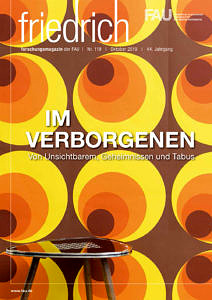Computer tomography: weight-bearing scans

In order to track down the causes for knee pain, doctors usually rely on the X-ray images delivered by a CT examination. Traditionally, patients lie on a bed which is passed into a tunnel, where the joint is scanned from all directions. The problem is that the pressure which the body weight normally exerts on the knee is not taken into consideration, as patients lie down for the examination. As a result, doctors often fail to identify the true source of the pain.
In collaboration with Stanford University, California, FAU researchers have now developed an imaging technique which allows patients to remain standing during the scan. ‘This allows any deformities of bones and cartilage to be taken into consideration as a possible cause of knee problems,’ says Prof. Andreas Maier, Chair of Computer Science 5 (Pattern Recognition). ‘The method provides a 3D image which allows doctors to identify sources of pain much more accurately than has been the case to date.’
The idea of diagnosing knee problems while the patient is standing is not new. However, until now hardware capable of providing high resolution images and software capable of correcting image errors which inevitably occur in measurements taken whilst bearing weight were not available. Maier hopes to close these gaps thanks to technological progress and his own personal network.
After obtaining his doctoral degree, he spent several years at Stanford University in California. Whilst there, he came across an innovative X-ray robot which is able to take CT images without patients having to go in a tunnel at all. At the end of its C-shaped robot arm are scanners which can be bent to fit around any part of the body. Patients can lie, sit or stand during the examination. The robot in Stanford was already being used for radiological examinations of the head and upper body. Maier and his colleagues adjusted it so that it could be used to take measurements of the knee area. ‘We had to re-programme the software,’ remembers Maier. ‘In its original state, it wasn’t configured to take the special requirements for measuring this joint into account.’
Patients have to stay as still as possible whilst X-rays are being taken in order to prevent the images from becoming blurred. We have all come across this phenomenon when taking photographs, for example when people walk through the frame whilst we are shooting a photo with a long exposure. X-ray images become blurred whenever patients move. The images must be clearly in focus, however, to allow specialists to differentiate between the various types of tissue. In Maier’s case, the major problem is posed by shaky knees. Patients who are standing are virtually unable to stop their knees trembling. IT, however, can use digital methods to compensate for the inevitable trembling.
If X-ray images are to be used to diagnose knee complaints accurately, they must be able to show tissue structures of at least 0.2 millimetres. Maier designed a two-step process in order to obtain images of this quality. At first, lots of images with short exposure times are taken from various directions, and are then merged on the computer to give a 360 degree image. The image is then edited using a special correction algorithm in order to eliminate unwanted effects caused by trembling knees. ‘These algorithms, developed by scientists at FAU, are what makes the procedure unique,’ explains Maier. ‘Using the algorithms, we can create virtual images which correspond exactly to the static images doctors require in order to make an accurate diagnosis.’
The initial results of the new procedure are to be published by the end of 2019. Thereafter, practical tests and further fine-tuning are on the agenda. ‘Our long-term goal is to reduce the number of operations to a minimum,’ says Maier. ‘At the moment, roughly 50 percent of knee operations are unnecessary.’
by Frank Grünberg
Here we present four further imaging methods:
Endomicroscopy: Rapid test for polyps
Light-sheet microscopy: an underground train system for immune cells
Endomicroscopy: diagnosing tissue without artificial contrast agents
Multi-spectral optoacoustic tomography (MSOT): tracking haemoglobin
FAU research magazine friedrich
 This article first appeared in our research magazine friedrich. You can order the print issue (only available in German) free of charge at presse@fau.de.
This article first appeared in our research magazine friedrich. You can order the print issue (only available in German) free of charge at presse@fau.de.